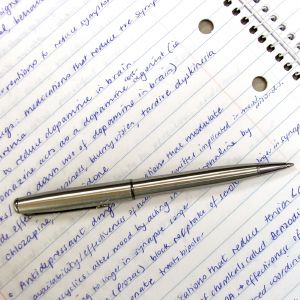My Cart
Your Shopping Cart is currently empty. Use Quick Order or Search to quickly add items to your order!

|
Jen Black
Product Manager, Chemistry and Inquiries in Science®
Updated December 2018
Looking for new types of student artifacts that demonstrate three-dimensional learning? Consider integrating the techniques of science journalism into your science class. You’ll prepare students to take their science knowledge into the world to make informed decisions about their health, evaluate and choose technology wisely, and contribute meaningfully to ongoing discussions in the scientific community.
While it is critical that students learn about and comprehend underlying science concepts across disciplines, having the ability to use that knowledge to understand the ever-changing world around them is perhaps more important. New medical discoveries, energy breakthroughs, and cutting-edge technologies require that citizens digest and assess massive amounts of information. With the explosion of information (and misinformation) on the internet, it is imperative that students learn to discern trustworthy science reporting—based on sound scientific theories and research—from untrustworthy science reporting—based on poor research or opinion. Bringing timely, relevant science journalism into the classroom can help students learn to distinguish between the two at the same time they engage in three-dimensional learning.
Within three-dimensional pedagogy, writing a well-researched scientific news article allows students opportunities to engage in several scientific and engineering practices—including asking questions; analyzing and interpreting data; and obtaining, evaluating, and communicating data—as they hone their writing skills.
A key difference between science journalism and scientific literature is the target audience. Scientific literature provides a more technical level of information to scientists. Science journalism aims to provide understandable news about science and scientific discoveries to the public through mainstream media, such as daily newspapers, television news programs, news sites, and blogs.
A great introduction to the process of science journalism is a read aloud—think aloud (RATA) activity. Read a recently published science article (or part of one) to your class. Encourage students to discuss the relevance, credibility, and accuracy of the science reporting. Use the article to model the process of establishing credible sources. The RATA doesn't have to relate to the current course topics. You can use it to extend the learning from previous units or simply engage students with real-world applications of science concepts they are likely to encounter in their courses.
If students are ready to try original science journalism, emphasize the research, vetting, and evaluation process rather than the mechanics of writing. The goal is an article that transforms the impersonal, generic, nonspecific scientific information presented in textbooks into authentic, personal, relevant information. Remind students to report—not give opinions or judgments. They can use traditional journalistic techniques, such as the inverted pyramid where the most relevant information begins an article and supporting data and less crucial information follows.
Science journalism can take less traditional forms as well. Consider having students produce a video, a podcast, or an infographic—all of which are exciting, less traditional learning artifacts—about a topic. The finished product is not as important as the research and validation that goes into it. Any of the mentioned forms will contribute to the real goal—to teach students to find credible information and use it to make educated, informed decisions.
These resources offer additional information, tips, and guidance about science journalism:
Wendy Saul, Angela Kohnen, Alan Newman, and Laura Pearce. Engaging Teens in Science Literacy. Arlington, VA: NSTA Press, 2012.